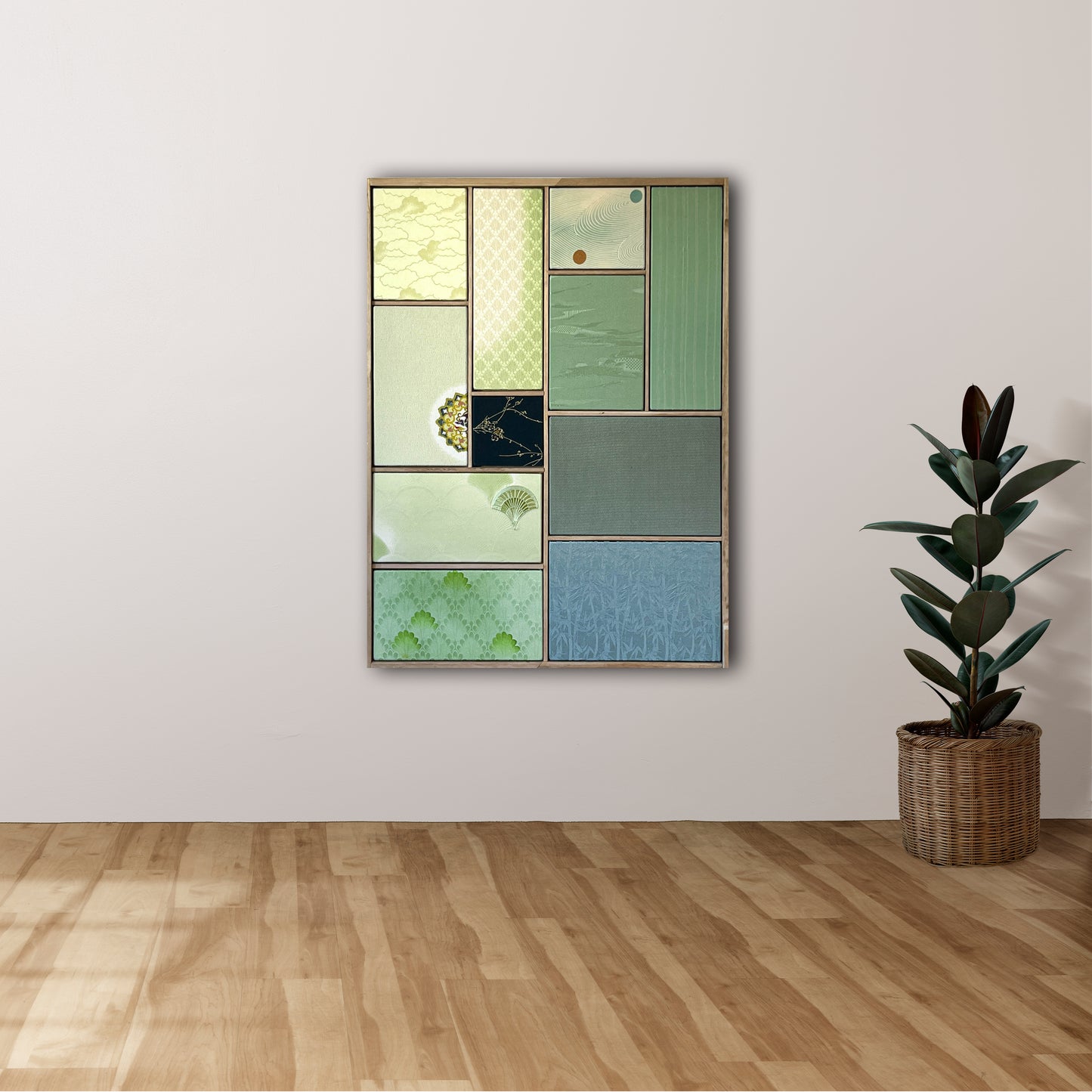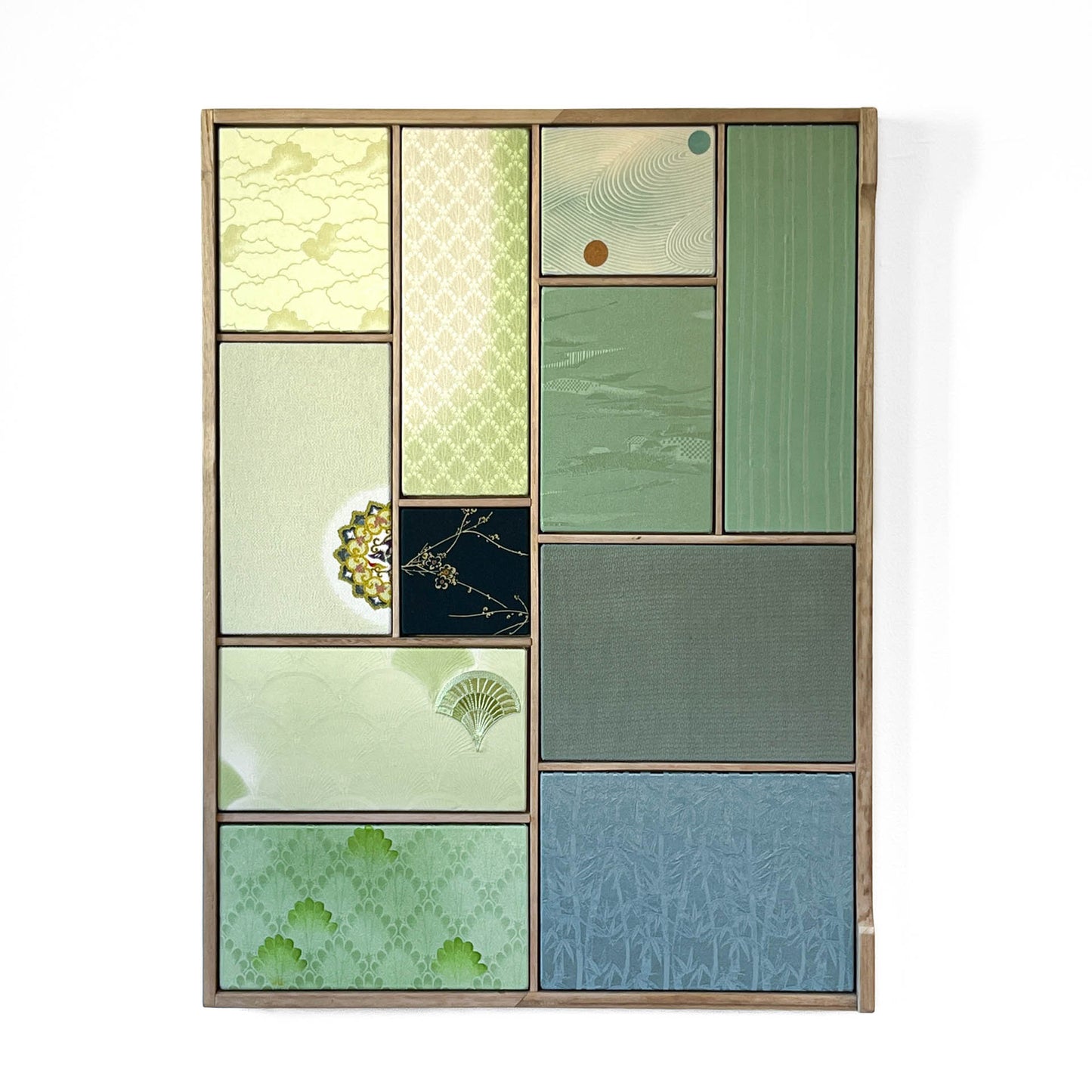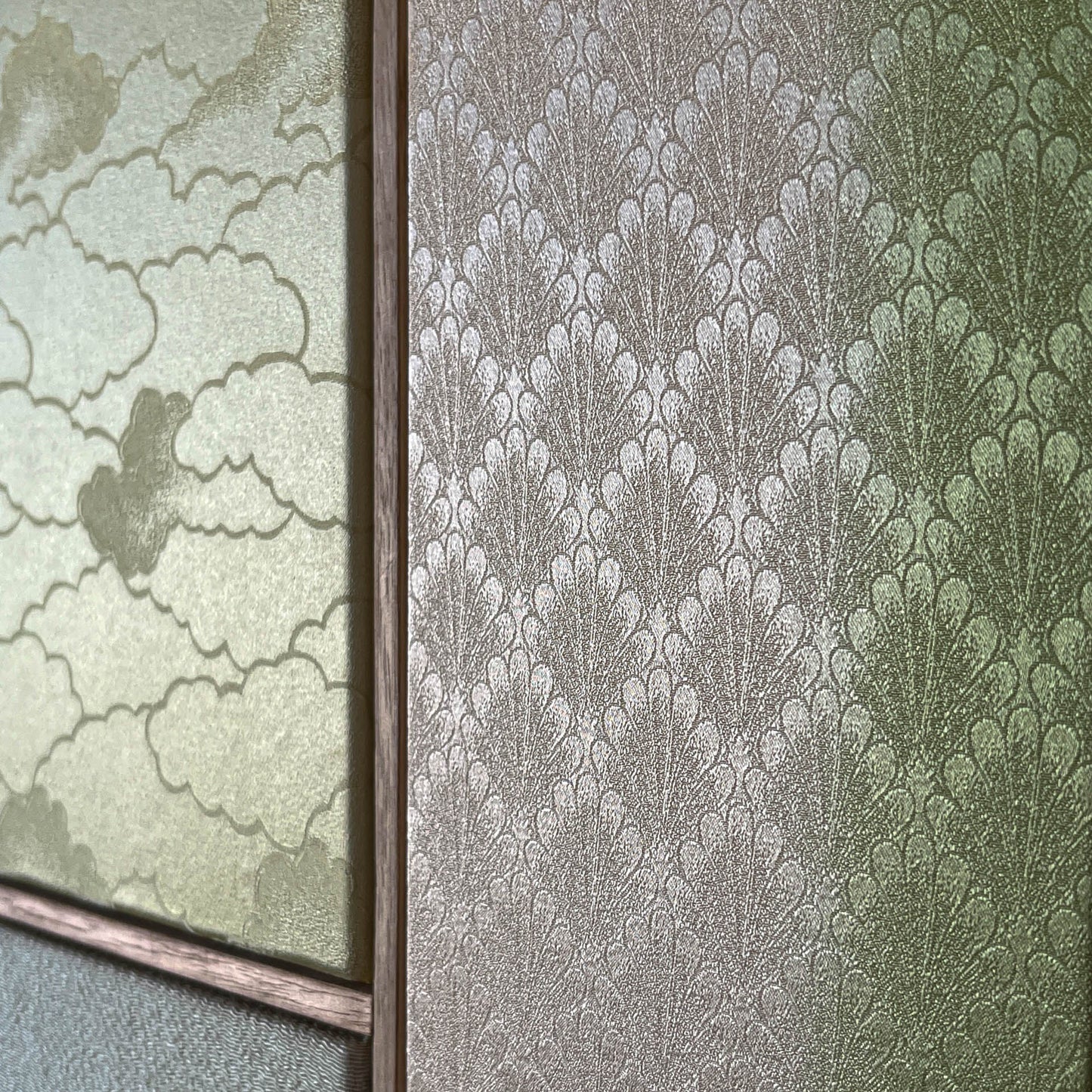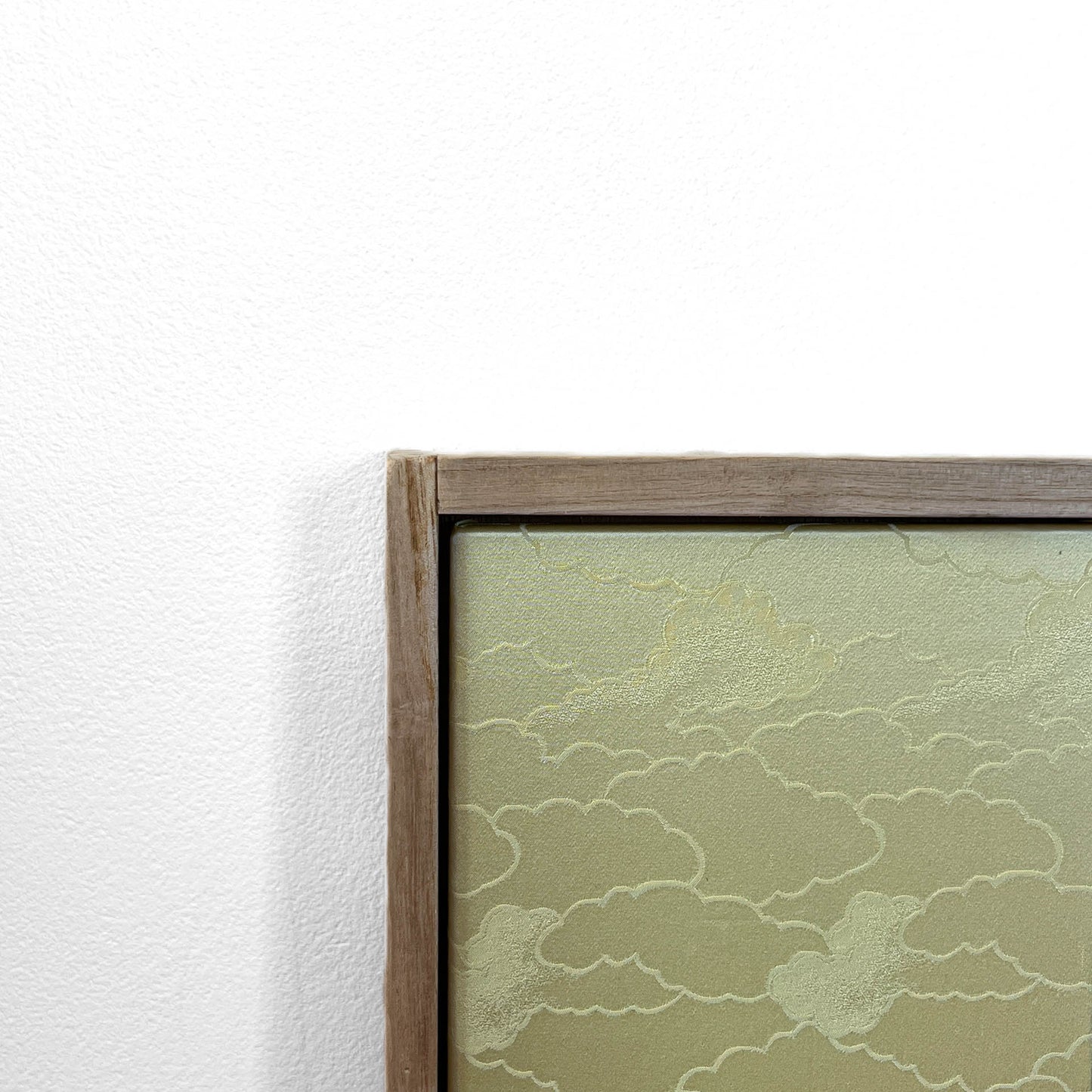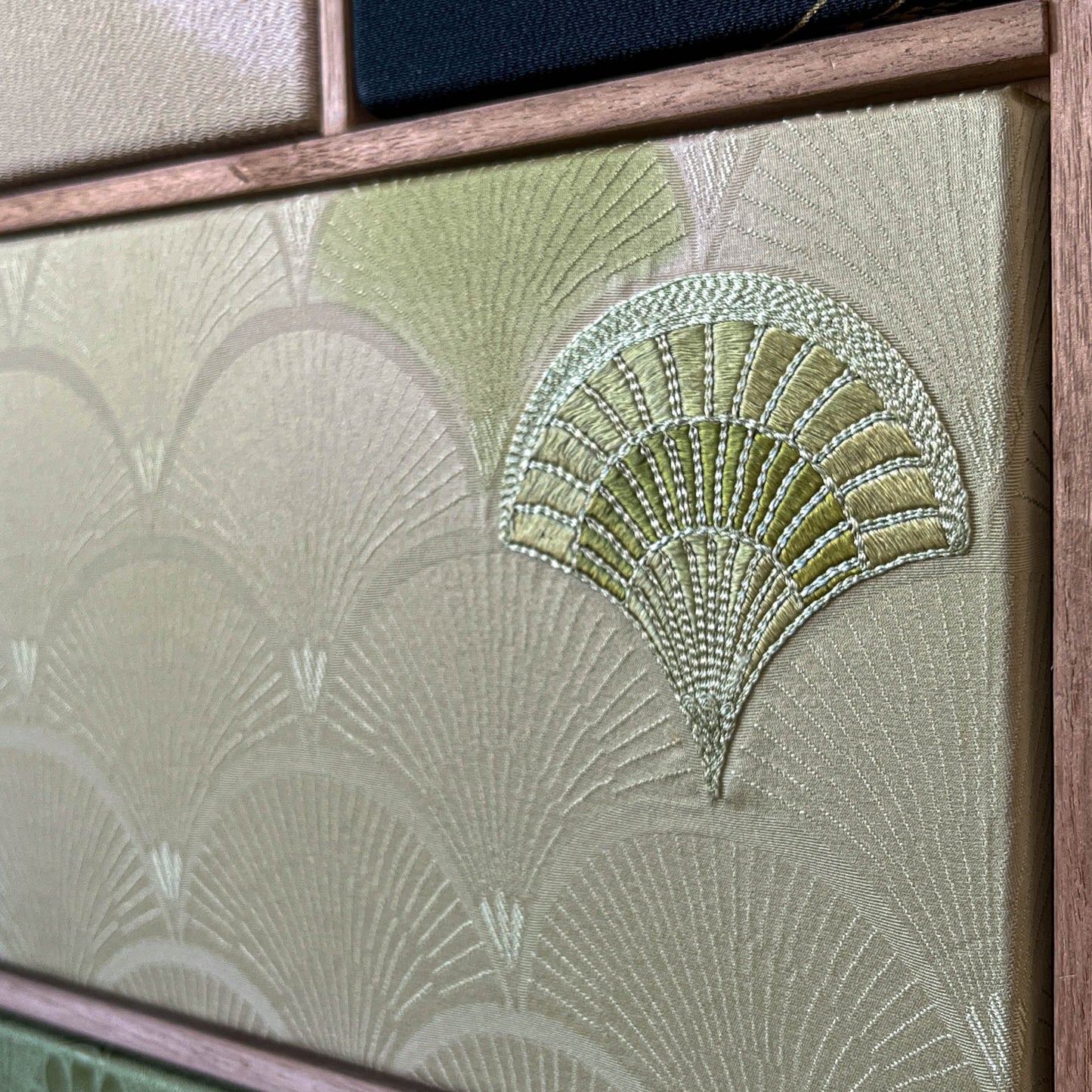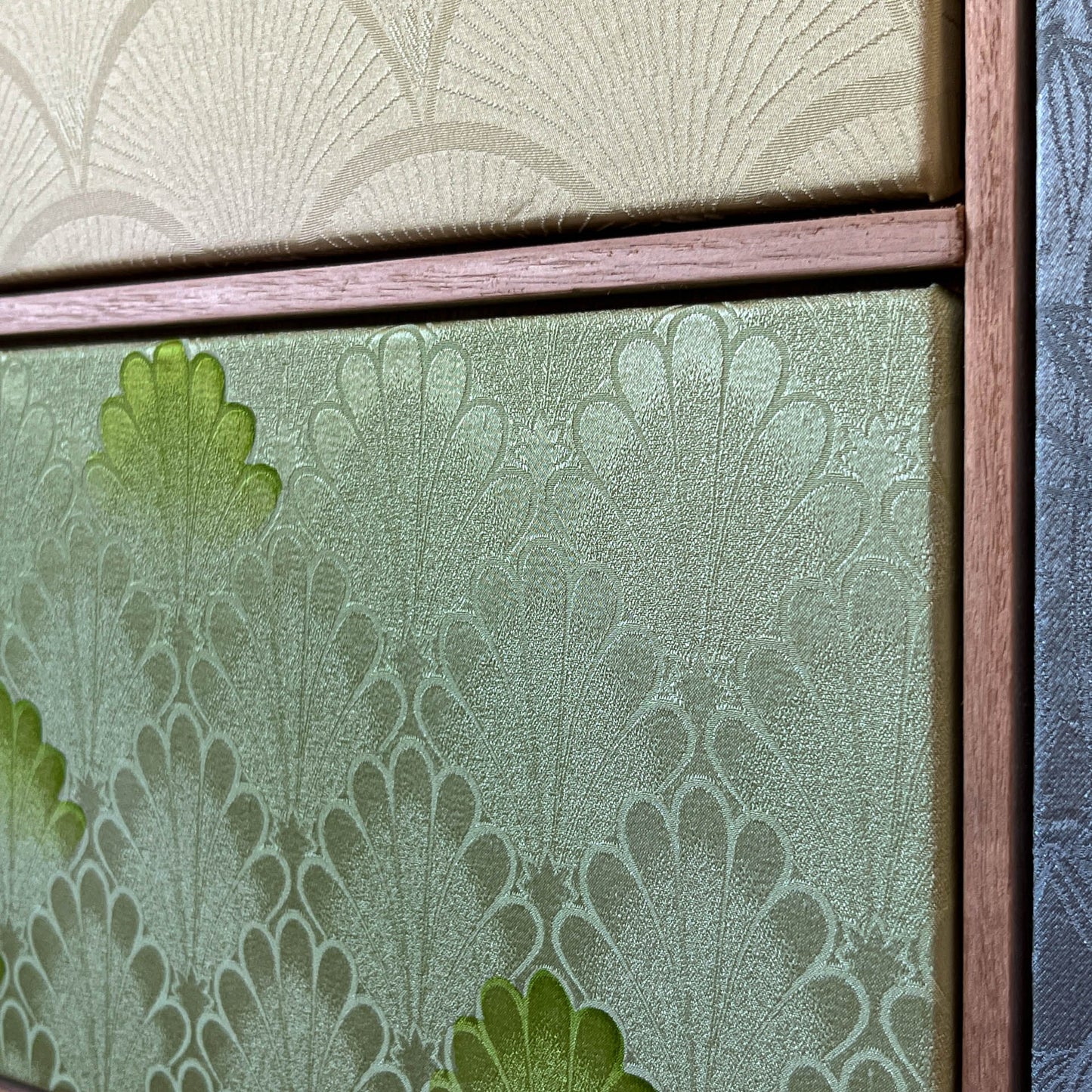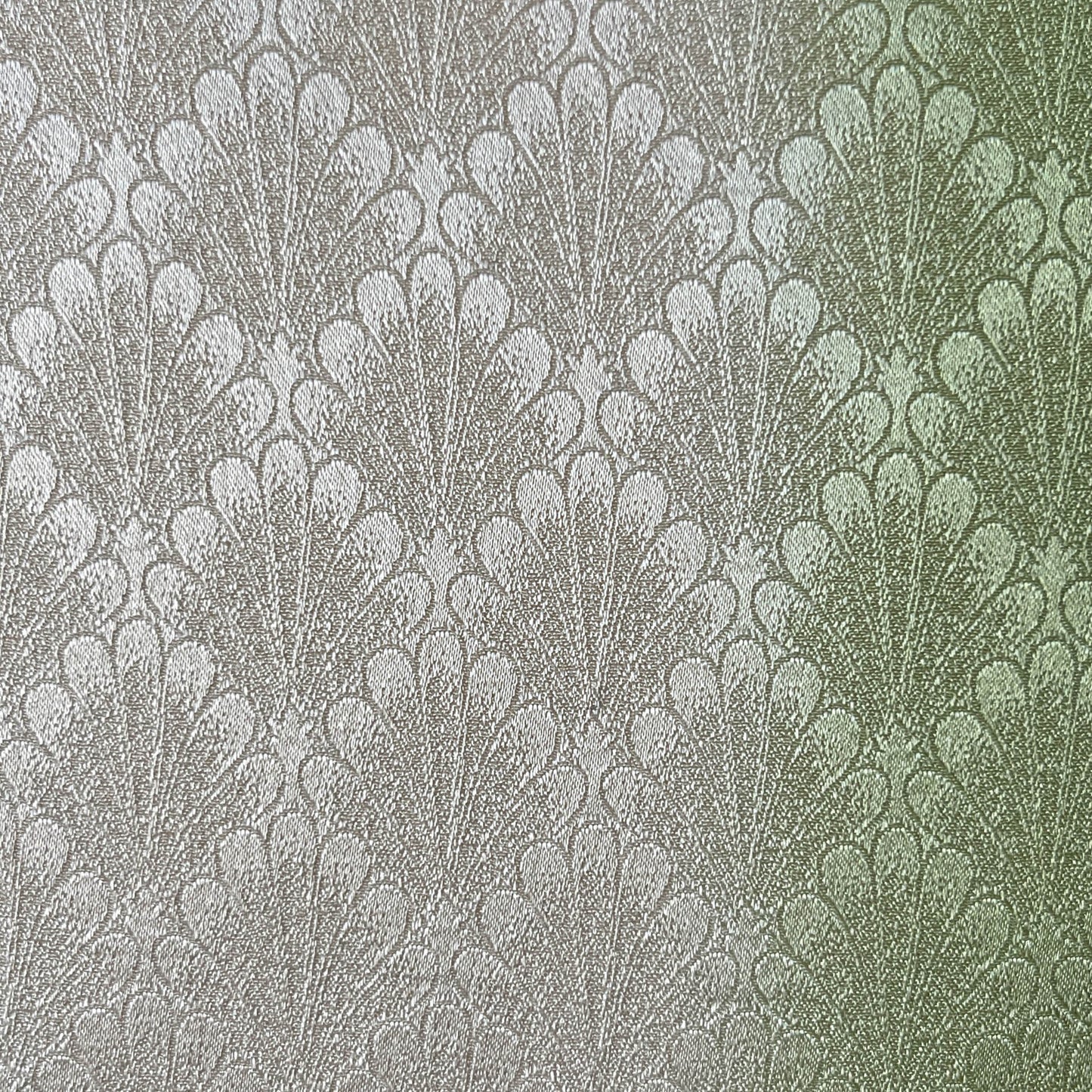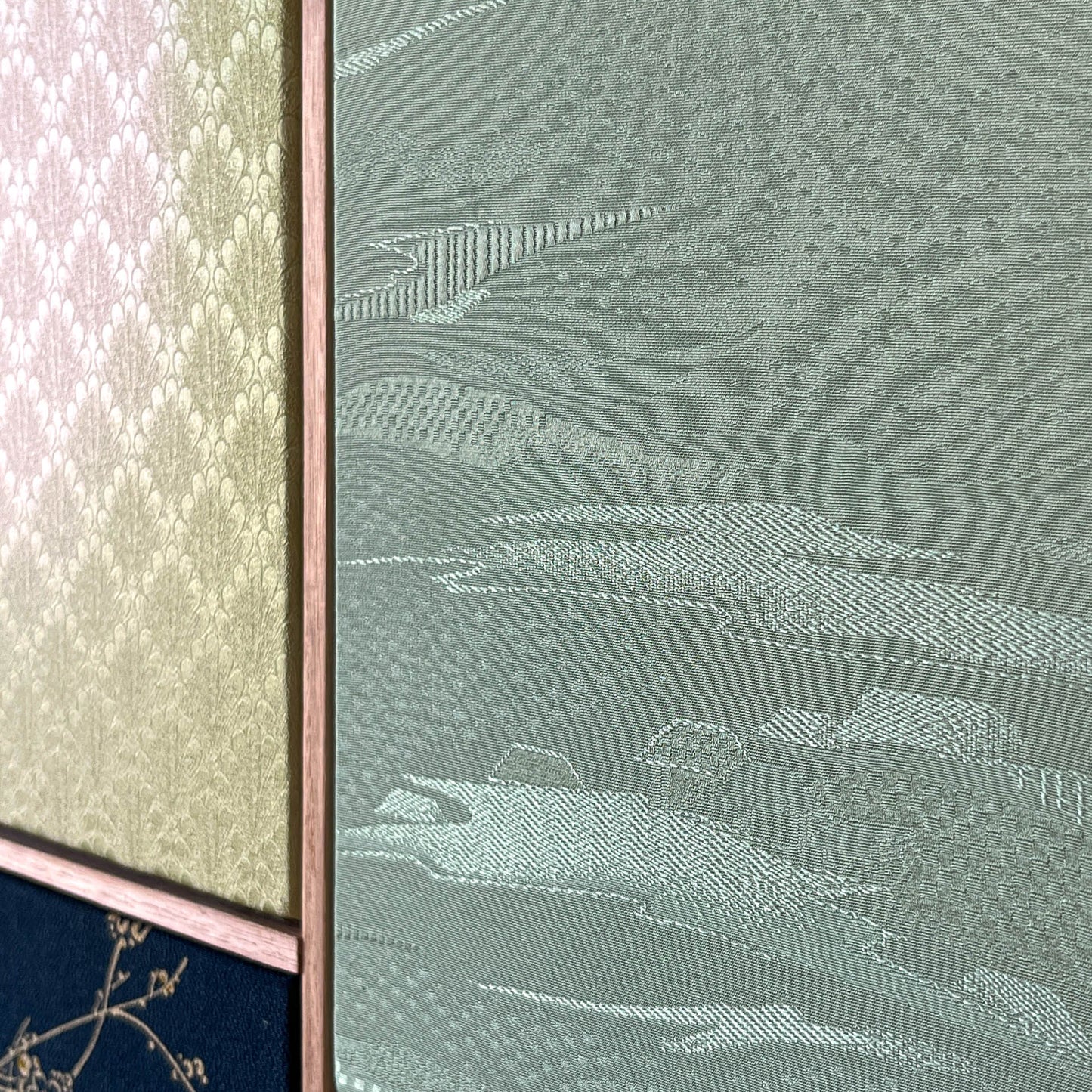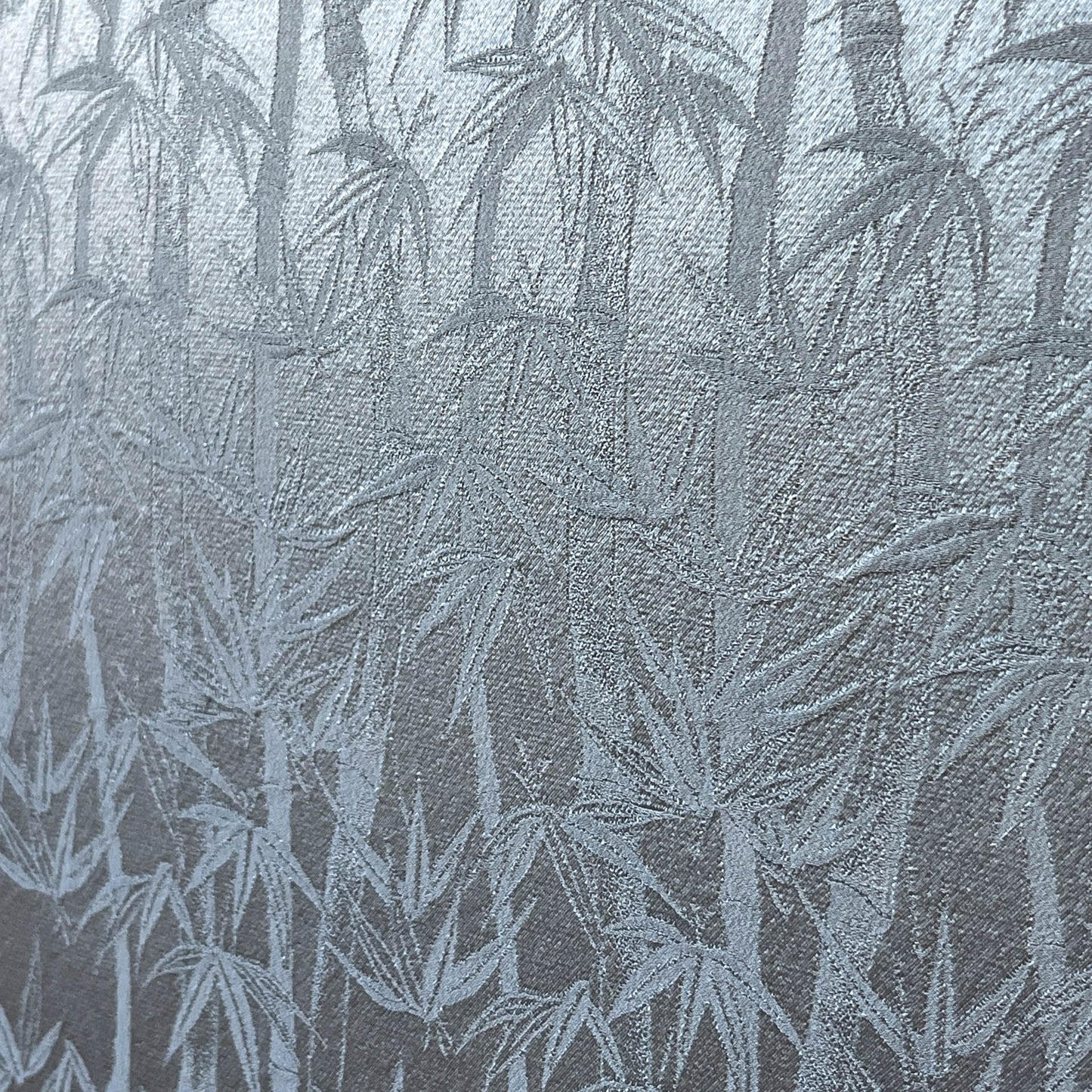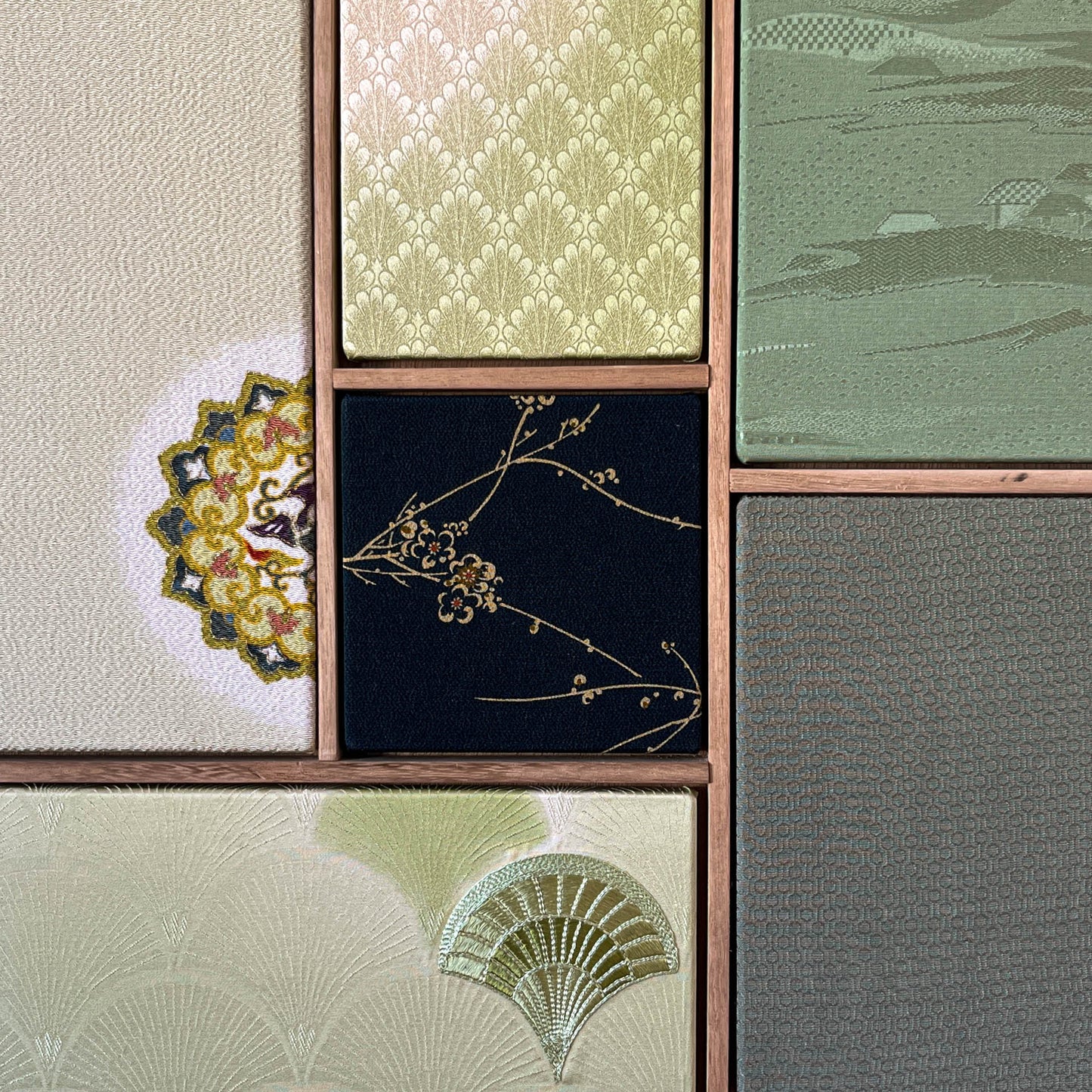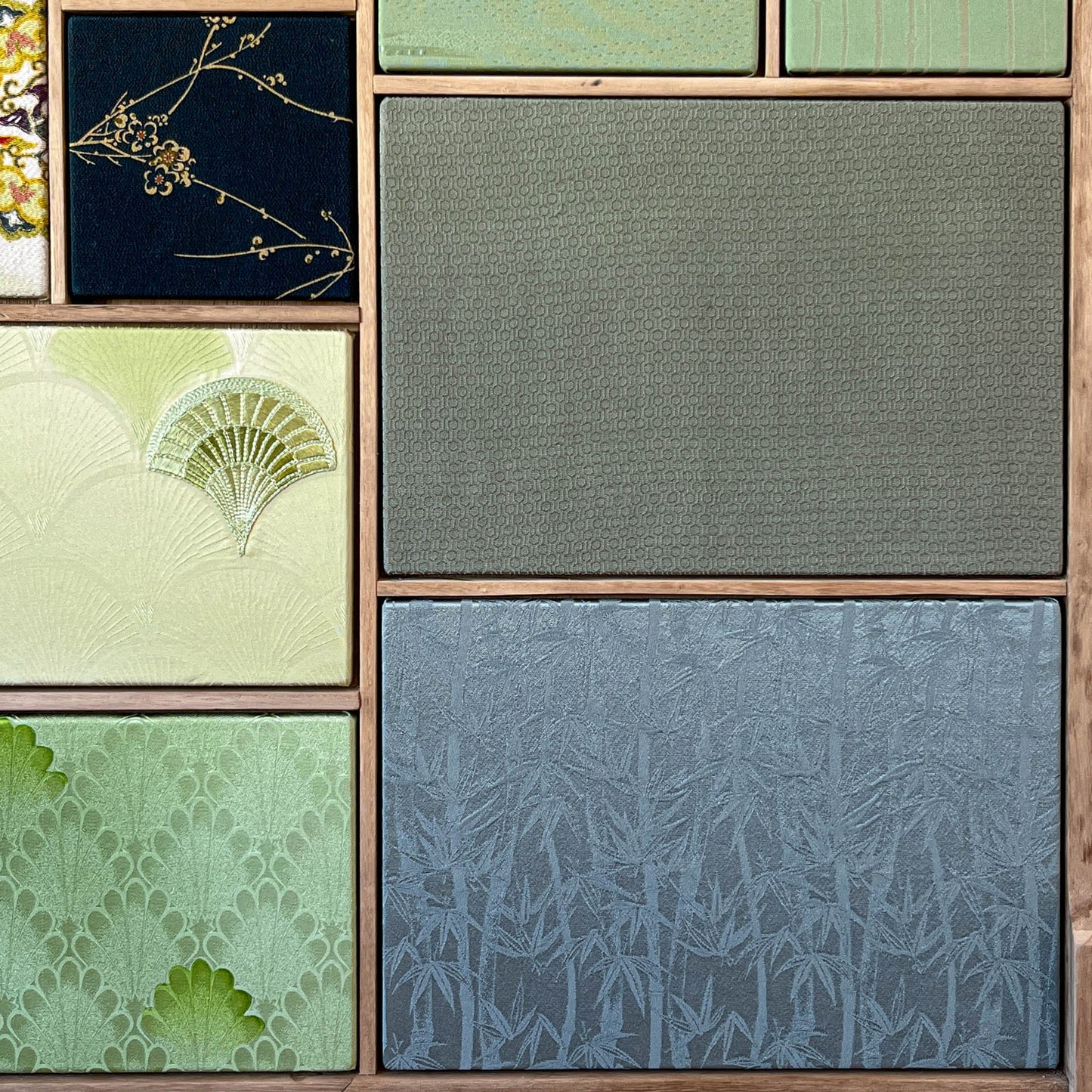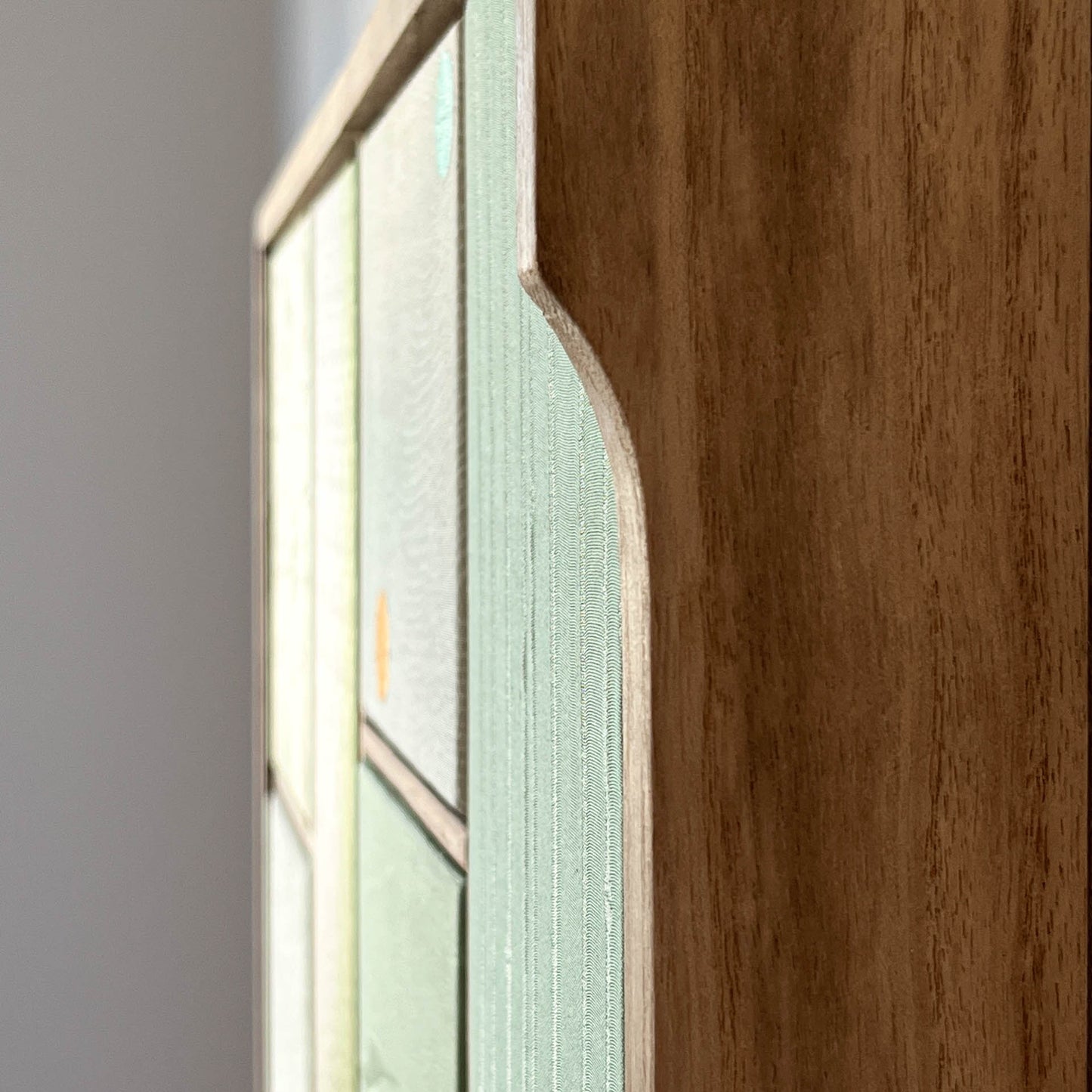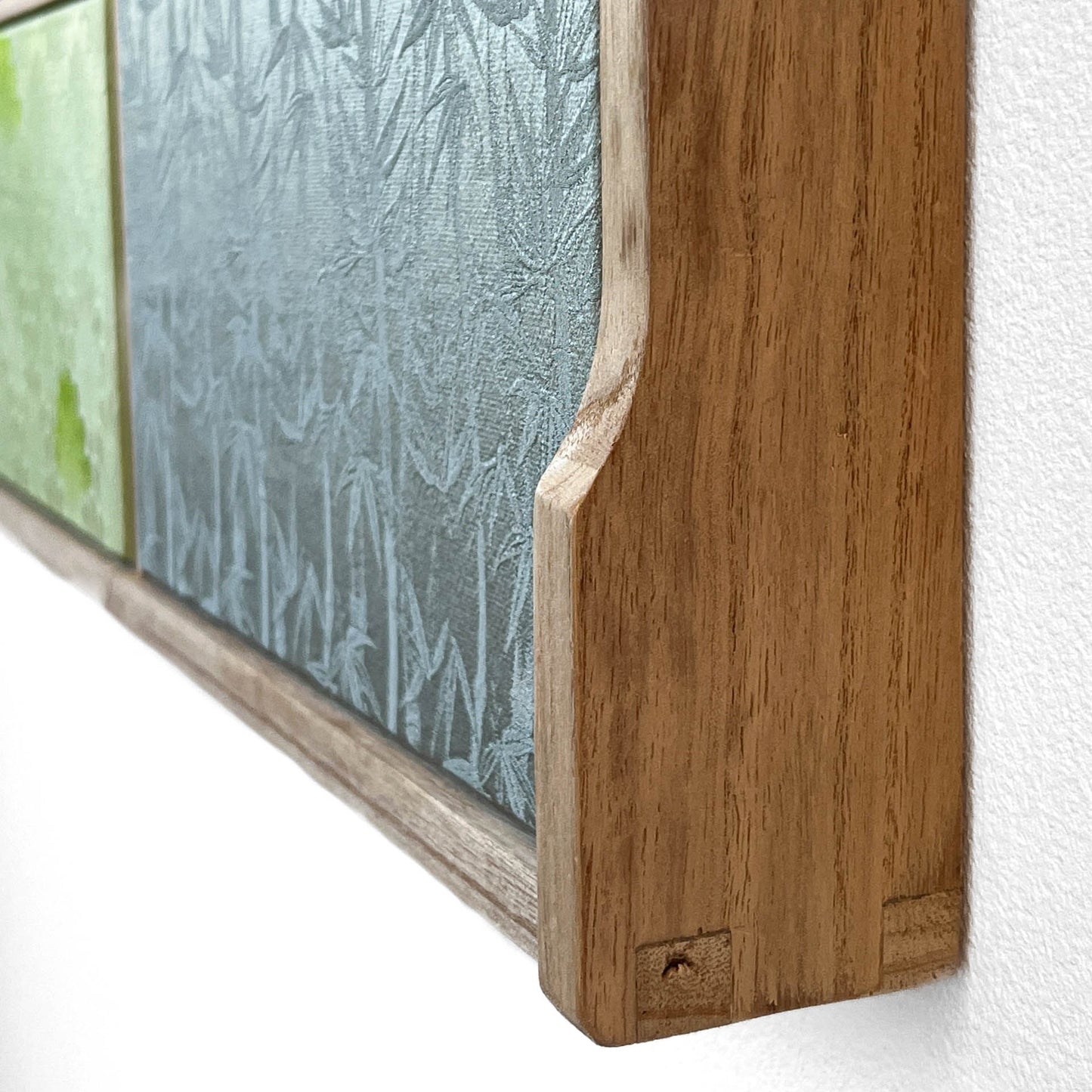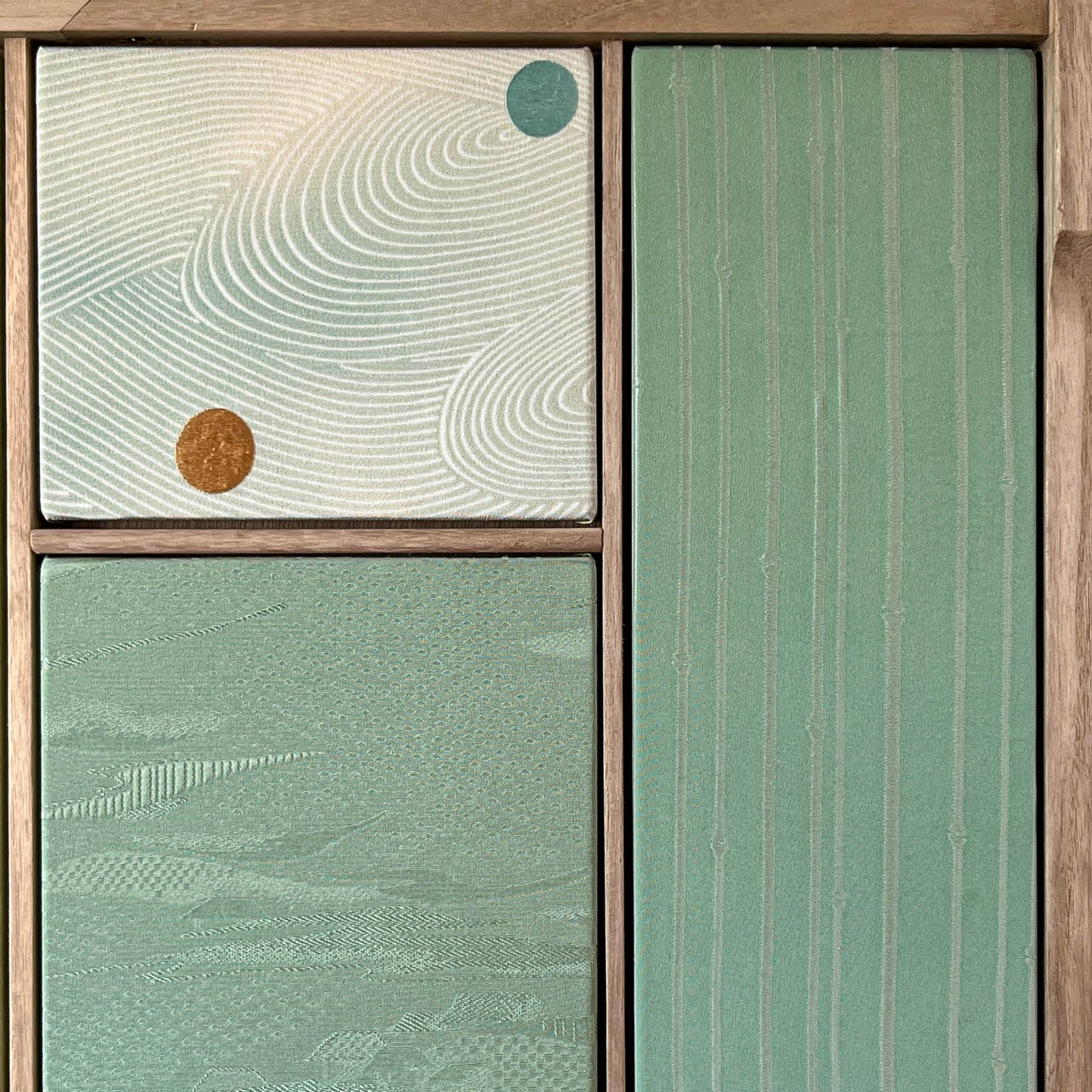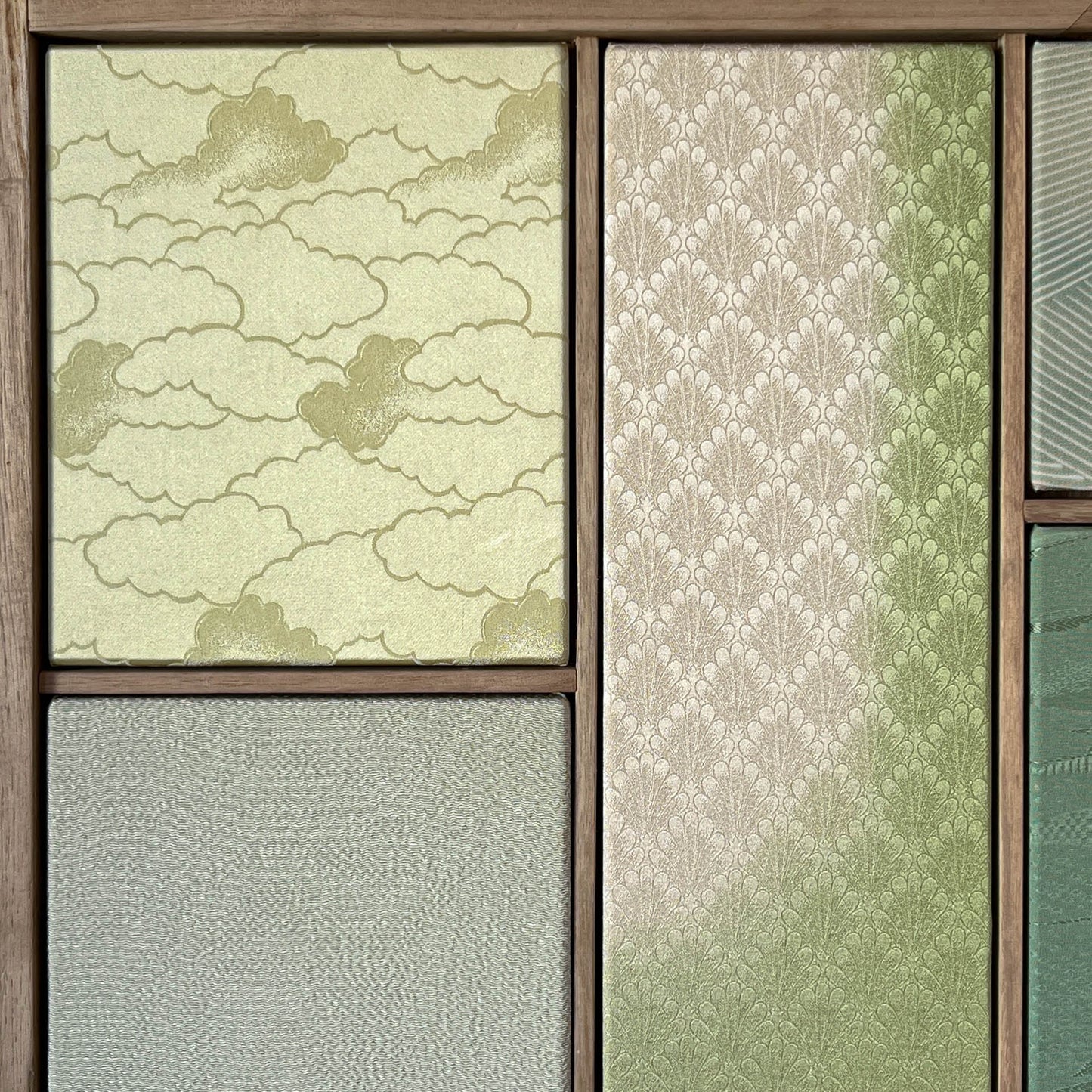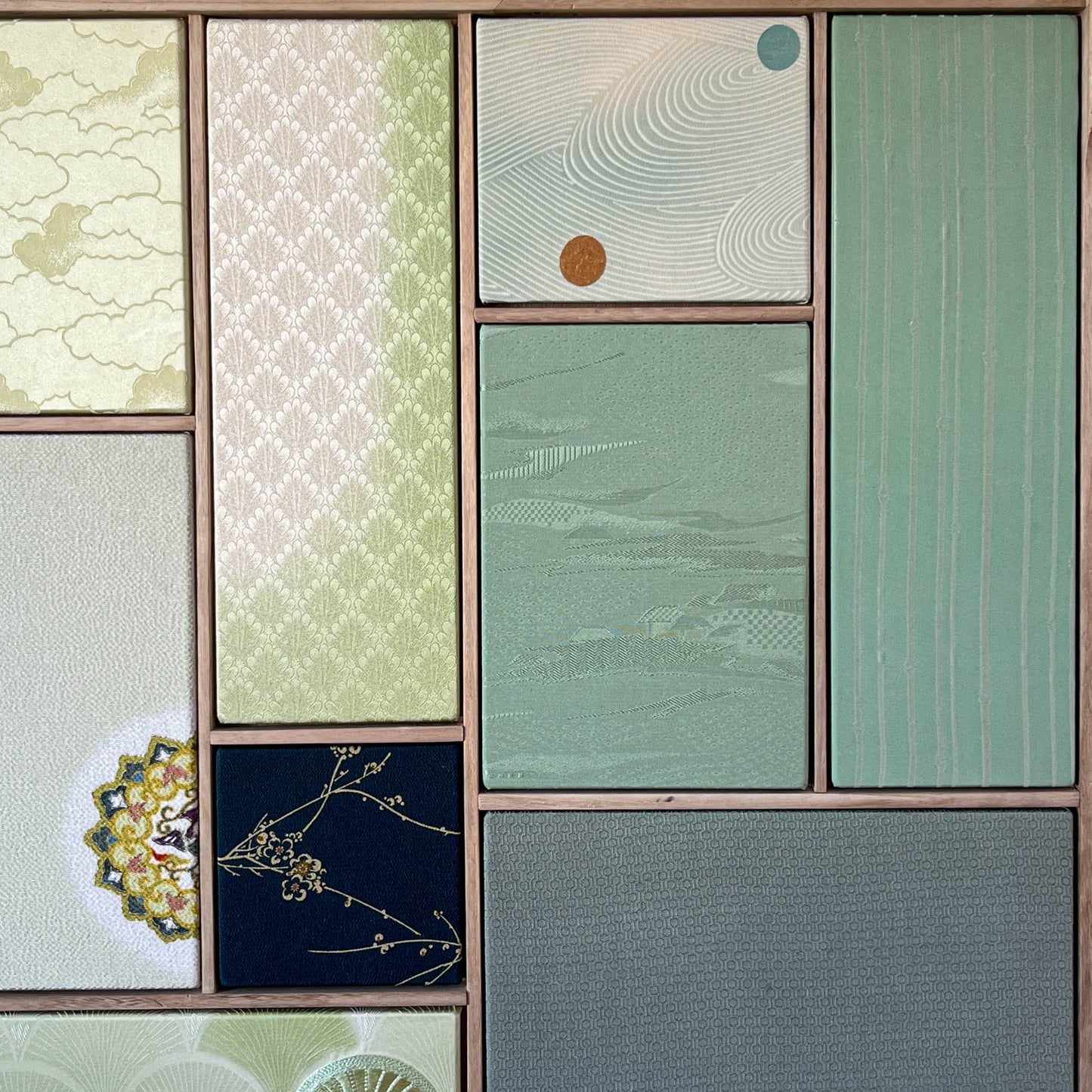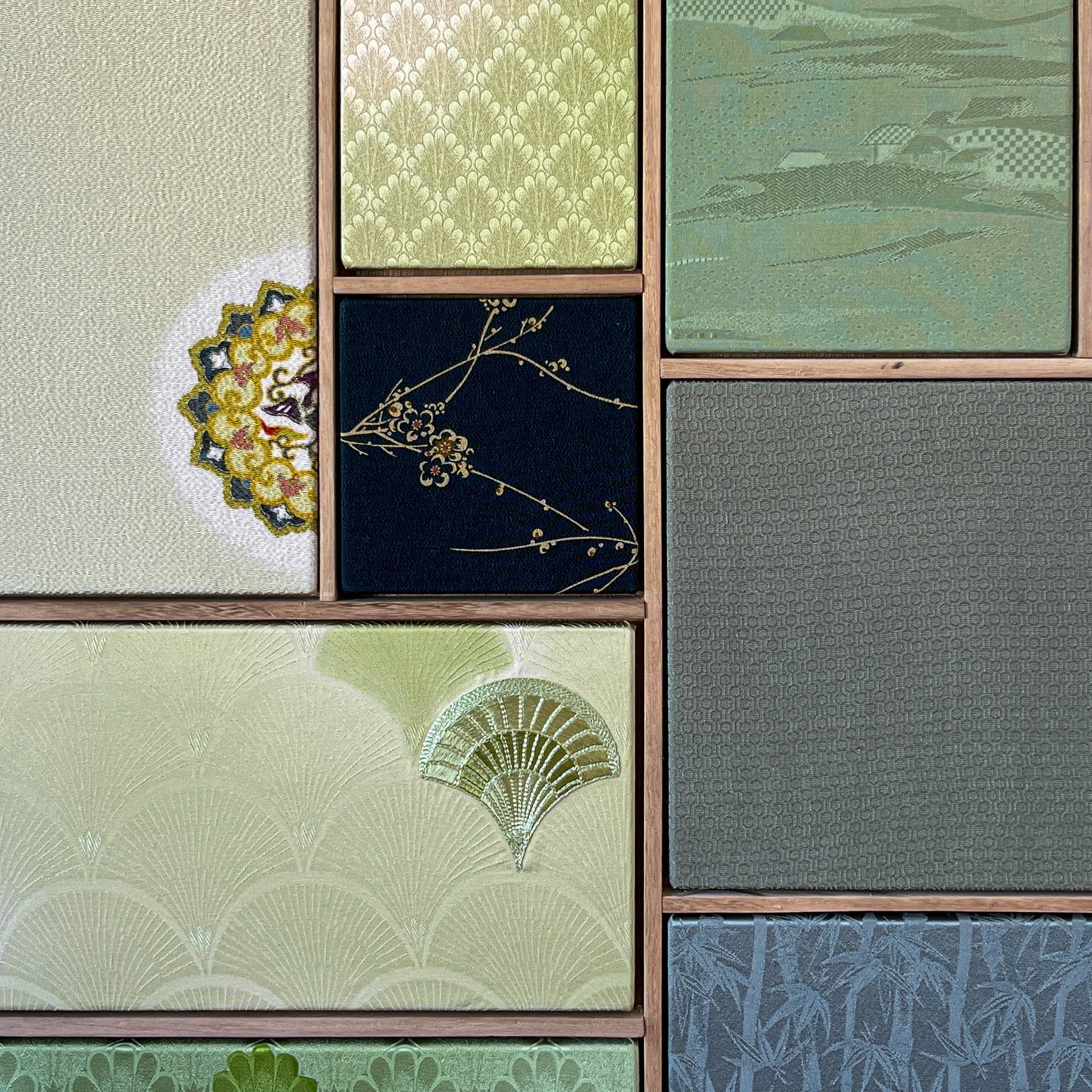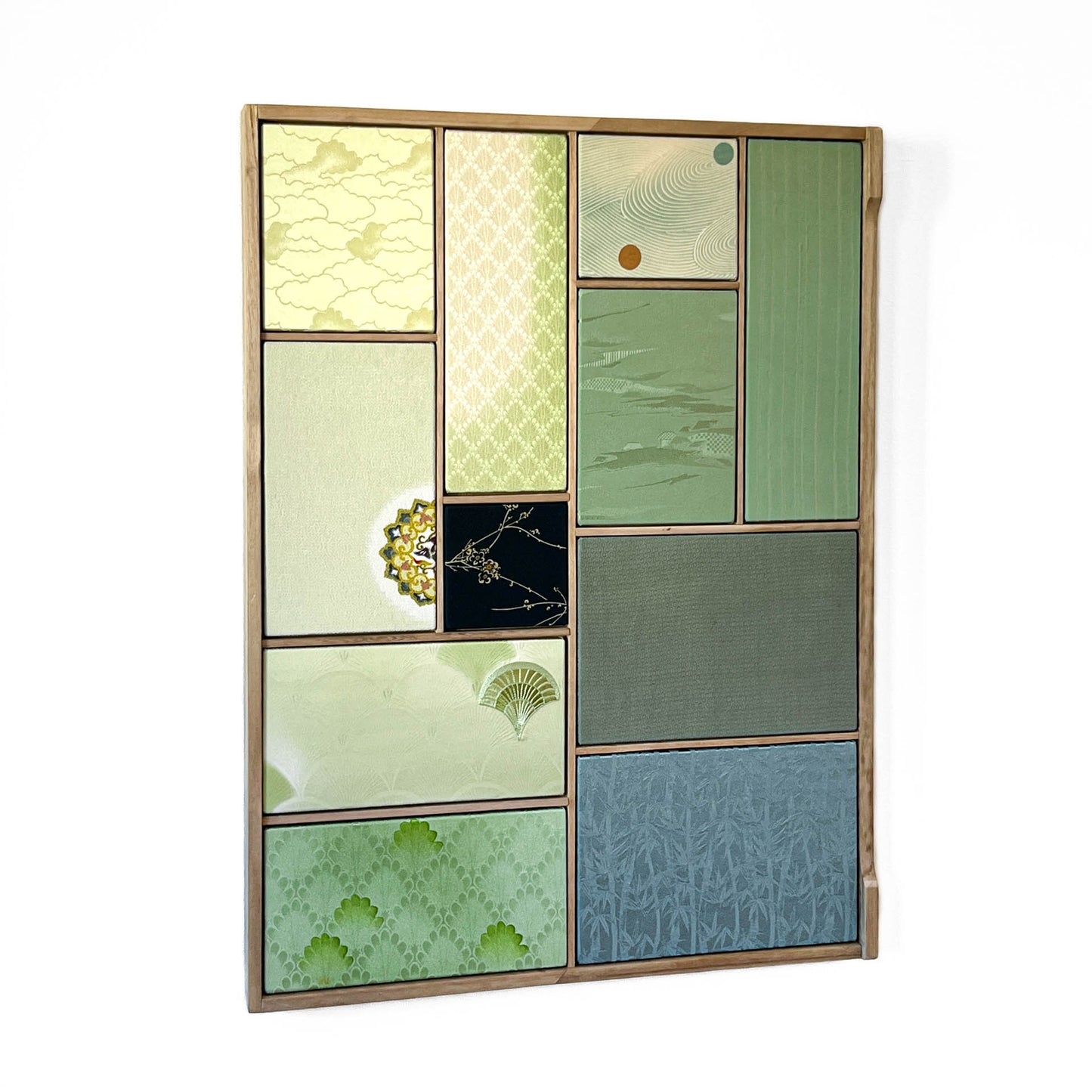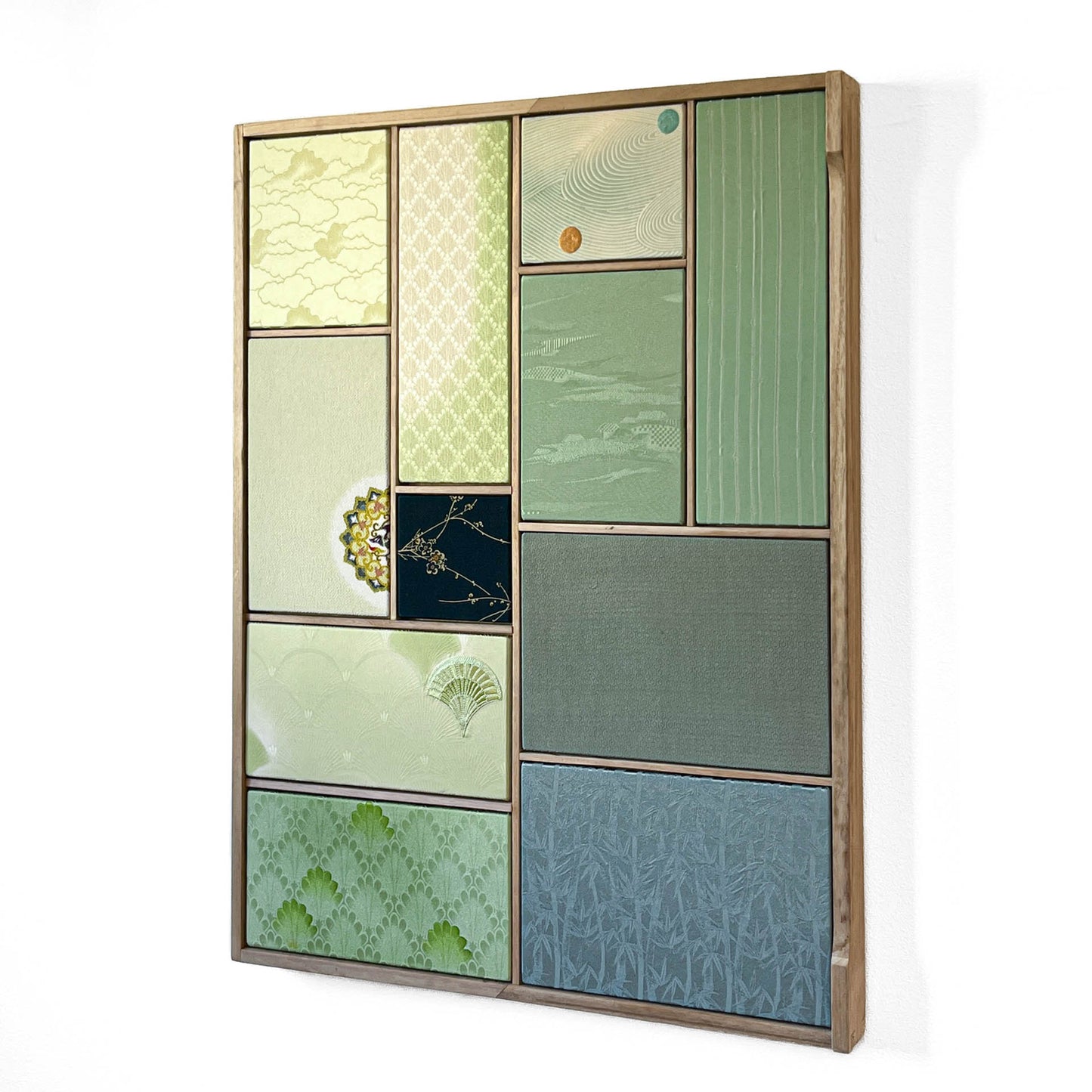Kobachi ~Green Collection~
Kobachi ~Green Collection~
Det gick inte att ladda hämtningstillgänglighet
Size
63 x 85 x 5cm
Materials
silk (outside-layer) , wooden frame (paulownia)
Story behind the work
This work is inspired by the green color palette, and is framed in paulownia wood originally used for a kimono chest-of-drawers.
It is elegantly framed with paulownia wood, a tree closely connected to kimono culture, and is filled with storytelling and sense of luxury.
In this artwork, the aim was to capture the wide palette of green color commonly used in antique kimono. Traditional Japanese culture, represented by the kimono, and wood, an integral element of Japanese craftsmanship, were used to bring this vision to life.
I used pieces of kimono, haori and kimono lining that could no longer be used as clothing and kiritansu chest-of-drawers that would normally be discarded to create the ultimate upcycled piece.
The artwork is called "kobachi". Kobachi is a style of serving in Japanese cuisine, when small plates are positioned in a special way to satisfy both mouth and eyes.
Explanation and meaning of pattern and colors
Green symbolizes "healing" and "harmony." Even in the Twelve-Layered Robes of the Heian period, green was always incorporated and worn by high-ranking women.
Green is associated with nature, such as trees and grass, and has long symbolized youth and growth in Japan. The color is reminiscent of the vibrant green of growing bamboo, further emphasizing its connection to vitality. Green harmonizes well with many colors and is particularly fitting as a background color for floral patterns commonly depicted on furisode.
This artwork offers a rich array of expressions, from bright and shining green to deep and subdued shades, each complemented by unique patterns and dyes.
"Wakakusa-iro 若草色" refers to the vivid yellow-green reminiscent of fresh spring grass. Originating from the color "wakakusa" used in Heian period layered robes, it depicts the scenery of early spring meadows where young grass sprouts, with a color scheme of "light blue front, dark blue back." The term "waka" means "young" in Japanese and conveys meanings of freshness, youthfulness, and newness, making "wakakusa" a seasonal term in haiku poetry. In the Heian period (8th cent.) literary work "Tales of Ise," the freshness of "wakakusa" was metaphorically applied to young women.
On the other hand, "Oitake-iro 老竹色" describes a slightly dull, grayish-green color resembling aged bamboo. In contrast to the youthful vibrancy of "wakatake-iro", it takes on a muted hue with a hint of ashiness. Traditionally, the term "oi 老" (meaning "old" in Japanese) was used to denote subdued and dull colors compared to the bright and vivid tones represented by "waka."
Furthermore, the central black element adds a striking contrast to the piece. Among traditional colors, "Binrojiguro 檳榔子黒" stands out as an elegant black with a hint of blue undertones. It's derived from a dyeing process where indigo is used as an underlayer, followed by dyeing with the fruit of the betel palm tree, "binroji," resulting in the highest quality black dye. Due to its association with the aristocracy and its use in patterned garments, it's considered the pinnacle of black hues. Another variant of this dyeing process involves using red as the underlayer, known as "Benishitaguro 紅下黒," which produces a softer black with a hint of redness. Interestingly, "Benishitaguro" is also referred to as "Binrojiguro."
This combination of colors and textures not only adds depth to the artwork but also reflects the intricate traditions and symbolism deeply rooted in Japanese culture.
In feng shui, green is considered a color of naturalness, harmony, stability, friendship, peace, and adaptability.
In this work, green is represented in different shades and tones to show the fascinating Japanese traditional dying techniques.
About the frame
Kiritansu - chest-of-drawers for kimono, is traditionally made from paulownia wood, a uniquely Japanese material closely tied to the world of kimonos.
Paulownia wood is known as the lightest wood in Japan, prased for its natural luster, resistance to moisture, and resilience against cracking. Since ancient times, it has been used in crafting furniture, chests, and musical instruments.
During the Edo period, it became customary to store cherished kimonos in paulownia chests, which offered fire resistance and protection from moisture and insects.
Traditionally, when a daughter was born, a paulownia tree would be planted. Upon her marriage, the tree would be cut down, and the wood would be used to craft a chest for her as a wedding gift.
Following the Ansei Earthquake during the late Edo period in 1855, paulownia chests gained popularity due to their ability to withstand fires and even float in water, thereby safeguarding their contents during floods.
I use antique kiritansu that can’t be used as furniture anymore to create basis and frames for my works. It adds them even more authentic atmosphere of traditional wabisabi spirit. Can you feel it?
Decoration Advice
Canvas can be displayed on a table, wall, etc. Hanging on a wall requires hooks, tacks or nails. It can also be displayed propped up on an easel. Ideal for a room makeover, housewarming gift, present, or souvenir for a loved one.
Precaution
All the works are made from real kimonos, antiques and vintages. For this reason, the fabric may have traces of long-term use and minor fabric damages. In case there are any scratches or stains, we always add a photo of the area on the item page, so please check before purchasing. Regarding precaution, cancellation and refund policy, please refer to the refund policy in the footer section of the site for information.
